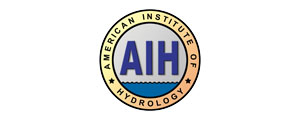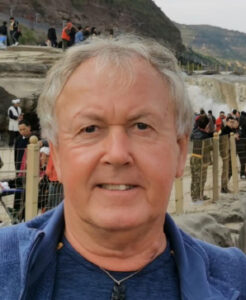 The future of the American Institute of Hydrology is bright! We’ve experienced some amazing membership growth in 2023 and now we’re up to nearly 500 members. One of our most promising statistics is our growth in student membership! I can’t wait to engage our students as they explore career options and make sustainable contributions to hydrology, and I look forward to the continued growth of our organization.
The future of the American Institute of Hydrology is bright! We’ve experienced some amazing membership growth in 2023 and now we’re up to nearly 500 members. One of our most promising statistics is our growth in student membership! I can’t wait to engage our students as they explore career options and make sustainable contributions to hydrology, and I look forward to the continued growth of our organization.
In this issue of our Bulletin, you’ll be learning more about our growing webinar series, our first ever Diversity, Equity and Inclusion Scholarship Program, our on-going collaboration with sister organizations like SEDHYD, and some cutting-edge studies conducted by prominent hydrologists.
AIH thrives because of volunteer members like you! Here’s the latest on our committee activities, and some specific ways your participation is critical to our success:
● Get involved with our DEI Committee and help launch our first AIH Scholarship Program. We need your help developing the scholarship application process and criteria, as well as developing a robust outreach program to students interested in pursuing higher education in hydrology. With so many new student members, the competition will be fierce, but exciting (Contact co-chair Matt Naftaly at mnaftaly@dudek.com to join).
● On June 29, please attend our 4th webinar of the year, titled “Investing in People to Achieve Clean Water Goals”, by Jenny Seifert! Join the Webinar Committee and help guide the future of our webinar series, including new opportunities to sponsor webinars (Contact Committee Chair Luciana Cunha at lcunha@westconsultants.com to join).
● Join the Board of Registration and help us administer our certification process (Contact BOR Chair Nick Textor at nick.textor@austin.rr.com to join).
● Join the Communications Committee and help curate articles for our Bulletin, and content for our website (Contact Brennon Schaefer at brennon.schaefer@state.mn.us to join).
Still not sure where to get started or have an idea for a new committee? Drop me a line at president@aihydrology.org. I’d love to hear your ideas on how to make AIH your professional home for hydrology!



















 Dr. Koehler is the CEO of Visual Data Analytics and a certified professional hydrologist with over 40-years’ experience.
Dr. Koehler is the CEO of Visual Data Analytics and a certified professional hydrologist with over 40-years’ experience.
 About the author
About the author
 Founder’s Award:
Founder’s Award:
